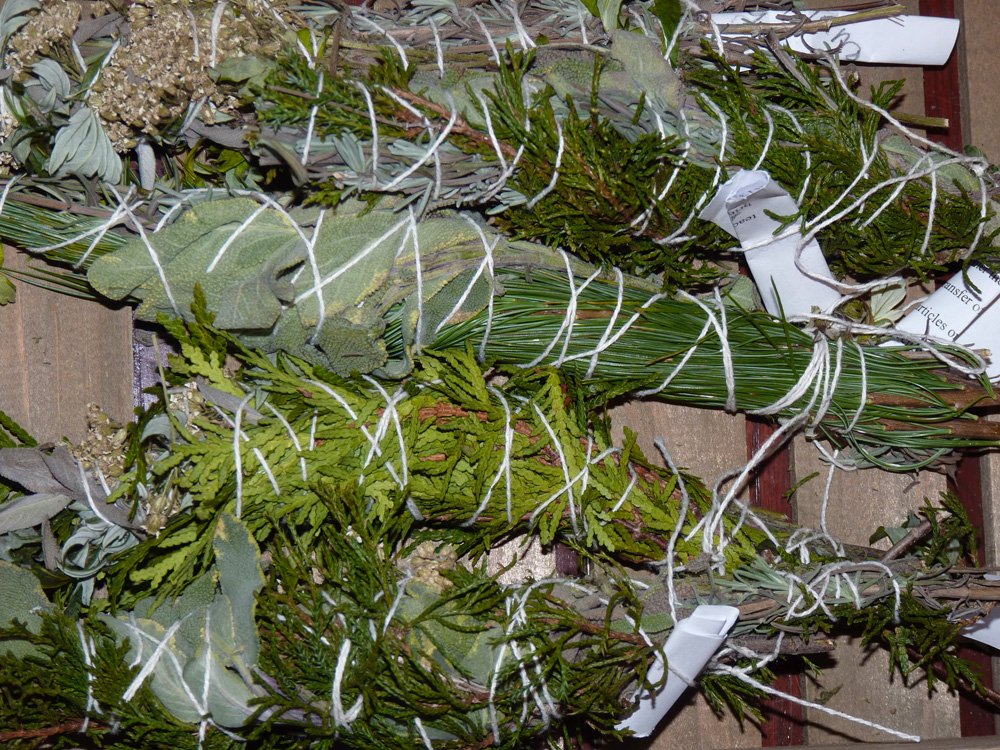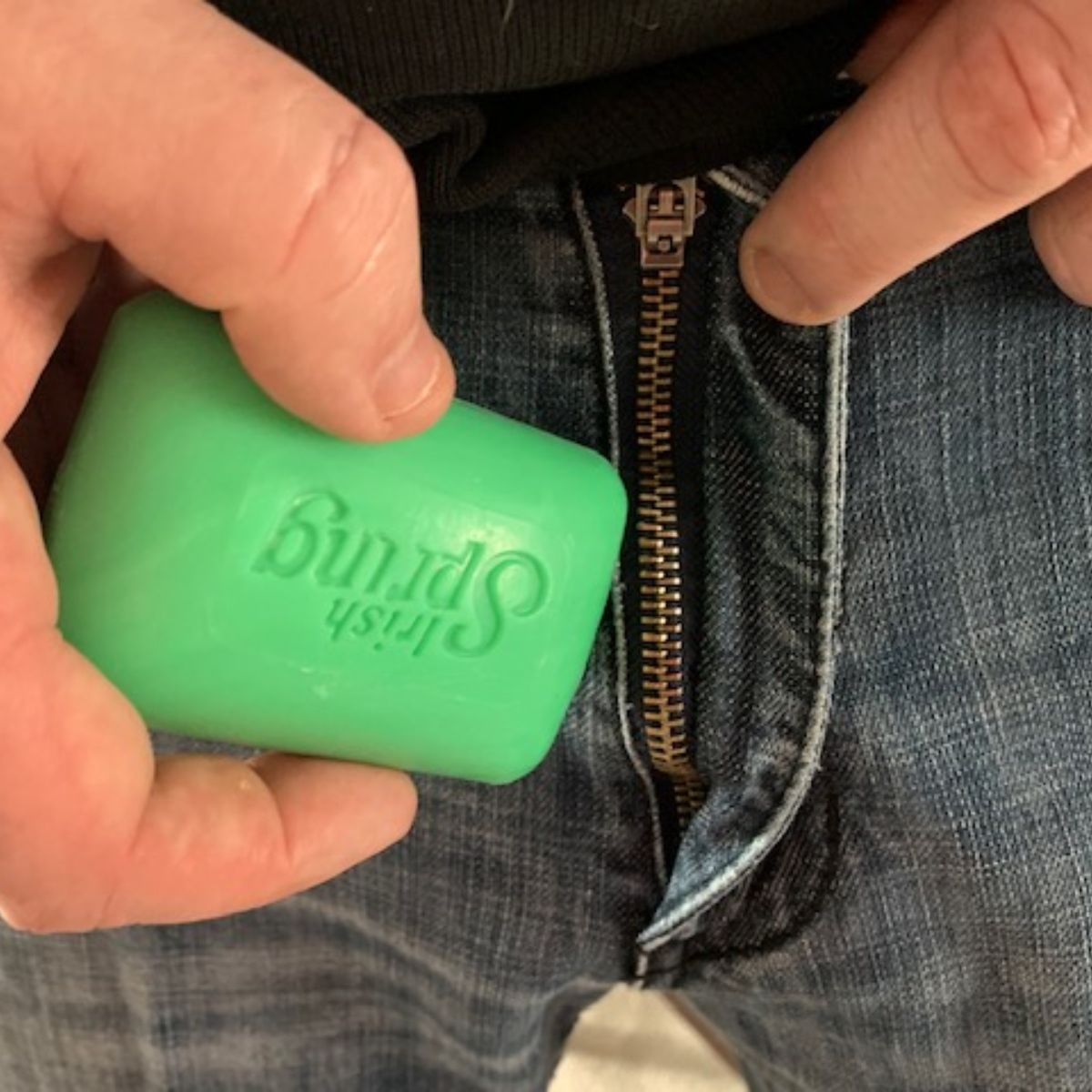Sage smudge sticks are very easy to use. Light one end of the stick, let it burn for 10 minutes, and then blow out the flame. Smudging your house with sage is an ancient tradition that has been passed down through generations just like the feng shui tradition.
It’s a Native American tradition used to purify, cleanse and bless any space, including homes, offices, and cars. This process can be done weekly, but if you feel like there is negative energy lingering in your home, it should be done more frequently.
By burning sage regularly, you will remove all negativity from your life, giving you peace of mind. You can learn how to perform a smudging ceremony by following this simple guide.
What You’ll Need
If you’re new to smudging ceremonies, there are certain things you’ll need to complete the ritual. These include a white candle, incense, and a bundle of dried sage. Native Americans traditionally use an abalone shell as a holder for the smoldering herb, so you can use anything you have at home, such as an unused ashtray or a small bowl.
You can also find a sage kit online or in your local metaphysical shop if you’re getting started. If you’re sensitive to sage smoke, don’t fret, there’re plenty of options. You can use a coffee grinder to grind the dried sage or buy smudge sticks instead of loose sage. You can also dry orange peels if you’re in feng shui. You’ll also need a sage, a vessel for burning sage, a fire source, and a fanning tool.
How to Perform a Smudging Ceremony
Have an Exit strategy
Once you have gathered your supplies, gather your family and friends so everyone is present for the ritual. Banish negativity by playing soft music or singing songs that bring you to a sacred place. If you play music, make sure it’s soft and not something that might entice unwanted guests.

Image caption: https://www.thespruce.com/
Allow everyone to gather in a circle in your designated ceremony area. The circle will keep the energy contained when smudging is performed and protect both the space and your soul from any negativity coming in or going out while you smudge your home.
Make sure you have the window and door opened before lighting up the sage. The smudge stick should be lit in a fireproof container, such as a lighter or a match, and then walked around each wall of your home clockwise. Allow the smoke to flow into every room, including closets, bathrooms, and even under your doorways. Keep going around the house with it until no more smoke is rising from it.
Use Sage if You’re Not Following any Tradition
A number of Native American tribes and other cultures have their smudging ceremonies. And each one of the tribes has its tradition concerning the type of herbs they burn. The number of times it should be done and how much time should pass between one smudging ceremony and the next.
Sage is the most common choice, especially white sage although other forms of sage can be used as well. There are other types of smudging ceremonies, but this is the most common one. You should keep in mind that if you’re not following any specific tradition, then it’s best to stick with the white sage.
Set Your Intention and Say a Mantra
Said, you want to ask for protection. You can repeat a sacred word or phrase that has meaning to you. It could be the name of your spirit guide or God, or it may simply be an affirmation that reflects what you’re trying to protect yourself from.
Before lighting the sage, make sure you take some moment to determine what exactly you want to purify your home from. The more specific you are, the better your smudging rituals will be. After that, decide on a mantra or prayer you will say during your smudging.
Light the Sage and Start Smudging
To fire up your sage, hold a lighter under it for about five seconds or so, making sure to run the flame over every part of the bundle except for where you’re holding it. You can also use matches, but I find the lighter is much easier. After about 30 seconds or so, excess ash will start to fall away, and your bundle of sage will be a beautiful shade of green.

Image caption: https://www.thelist.com/
Once it’s completely ashen, take your smudge stick by the end you lit with and wave it gently back and forth over every surface in your home. If there are particular areas that scare you or emit negative energy, go ahead and concentrate your smudging there for a couple of minutes. Once you’re done with the house, be sure to wave it over yourself as well.
Know When to Smudge
When do you want to smudge? You can smudge after you’ve completed building your own home and now moving in. Or you can do it when staying in a hotel room. This will help you feel like you’re more at home. Smudging before guests arrive is another way to ensure that you protect your space and set the mood for company.
When someone in your family gets sick, it’s time to smudge. Sometimes illness can be passed on energetically. You can also smudge when you sense anger, tension, or discord among family members.
Consider Additional Rules Out of Respect
If you smudge a hotel room or a house that someone else owns, always ask permission. Unless you’re an invited guest in the home, be sure to ask before smudging. Different traditions also have different ways of preparing their participants.
Many elders might not have these strict rules but consider following them. For example, do not drink alcohol or take any drug 24 hours before or after smudging. Do not have sexual relations before or afterward, either. Also, make sure all participants are wearing clean clothes and that their hair is clean and combed out before starting the ceremony.
Failure to consider these traditions can weaken your spiritual being. Pregnant and menstruating women are also asked to leave during the ceremony. Smudging may look easy, but it requires practice and knowledge in order to successfully repeat that positive energy in your home. Remember, if you find you are having negative thoughts while smudging, stop and try again another day.
Pray Before You Begin Smudging Your House
Be sure that you are in the right mindset before you begin your smudging. Your mind should be pure and clean. Don’t carry anger or hurt into the ritual. Remember, this is about getting rid of bad energy and attracting good energy into your home, so do not bring any negative vibes to it. You can pray, meditate or remind yourself that you have a clear mind and heart before you even begin.
You can pray for your world’s creator, the spirits, or anything you feel comfortable with. You can also talk about your gratitude towards plants and God’s creation if you don’t want to pray. You can continue praying throughout the ceremony in silence or loud since the smoke will carry your prayers.
Place Your Dried Herbs in a Container or Bundle them Together
For the best results, follow the steps in order. You do not have to pray when you light or smudge your herbs, but this is when you should remember to love and be grateful towards your home and everyone who lives there.

Image caption: https://druidgarden.files.wordpress.com/
So, place your smudge stick or bundle of herbs in a natural container such as an abalone shell, wooden bowl, or clay dish. If you would like to add words to your prayer, place them underneath the arrangement of herbs. You can either lean a sign against it or tape it to the bottom of your container.
Burn Your Herbs to Produce Smoke, Not Fire
When you are ready, light your herbs on fire. If you used a bundle of dried flowers and leaves, it might take a little while for them to catch fire. Don’t panic! Just put them into the shell or dish, still lit side up, and let them smolder.

Image caption: https://cdn.lifehack.org/
You can leave them to burn on their own for a little while, then blow them off so the herbs can only produce smoke. If the smoke starts running out during the ceremony, feel free to relight them and put them back in the bowl.
Purify Each Participant by Fanning the Smoke Over Their Body
Take a deep breath, and start fanning the smoke in a clockwise direction over your body. You can either hold the shell up in one hand and fan with your other or tilt the shell to let the ashes drop out and use a feather or a cleansing plant like sage to move it around your body.
Make sure everyone in your room is purified by moving around slowly to get the smoke everywhere, especially taking care of sweeping it over each participant’s face. Many people like starting with the head and heart then moving the smoke downwards on their arms and legs. You may use any method that you want.
Waft the Smoke in Every Corner and Outside of Your Home
Begin by putting the shell down and fanning or blowing to spread the ashes. Then, pick up the shell again (be careful not to burn yourself!). Walk around your home in a clockwise direction, taking care to get to every corner. Gently waft the smoke into open windows.
Use feathers to push the smoke outside as you pass through an open window or door. This will ensure you get rid of negative energies in your home. You may walk clockwise or counterclockwise as you wish. As in most smudging ceremonies, different cultures and individuals follow different practices.
Close the Ceremony
When you arrive back at your door front, chant your final mantra or prayer. Visualize how your entire home is filled with warmth, light, happiness, and blessings. Then speak your intention for one last time before closing the ceremony. Do not smudge your pets because certain sage varieties are toxic to dogs and cats if you have pets in your house.
Let Your Ashes Cool Before Returning them to the Earth
It’s best not to return the ashes from your smudging ceremony back into nature until they have cooled off. You can keep them in a special container for a few days if you wish, but it is important that they don’t get mixed up with sand, soil, or garbage while still hot.
FAQs on How to Smudge Your house
How often should you smudge?
Some people smudge their homes daily, but it’s best to do so at least twice a year. Once before the New Year and once again around Beltane or Lammas is an excellent time. You can, of course, smudge your house as often as you like; don’t go overboard. Remember that your intention should always be clear when smudging. You can smudge when you feel weighed down by stress or worry.
What do you say when smudging your house?
What to say when smudging depends on several occasions. For example, if you’re smudging because you moved into a new house, ensure you cleanse your family. You can say words such as “fresh start,” “protection,” or “happy.” If you’re smudging because your family feels exhausted, you can say words such as “cleanse” and “clear.”
How do you cleanse your home?
There are many ways to cleanse your home. One common way is to use white sage, sweetgrass, cedar, or any other natural herb. You can buy bundles of these herbs at your nearest local metaphysical shop.
Final Thought on How to Smudge Your House
As you can see, smudging rituals are a beautiful technique to clear your space and welcome positive energy into your house. Also, treat this ritual with respect as it’s a sacred religious practice in some Native American tribes. If you’re not familiar with the ritual and the plant, it’s best to ask someone who practices this religion.
The post How To Smudge Your House appeared first on Kitchen Infinity.
Did you miss our previous article…
https://chefbuano.com/?p=723











